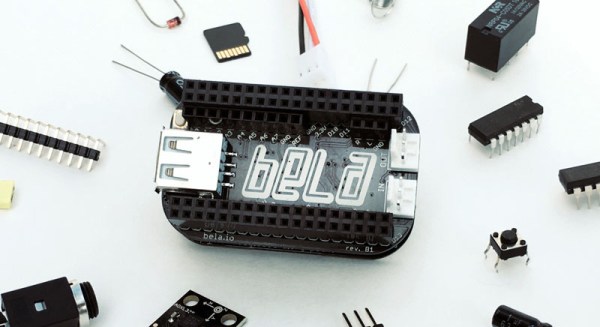The BeagleBone has long been a favorite for real-time I/O, and now with the release of the PocketBone — the tiny key fob-sized BeagleBone — there are ever increasing uses for this tiny little programmable real-time Linux module. The Bela Mini, just released, is the latest add-on cape to take advantage of the processing power of the micro-sized PocketBone.
The Bela Mini is a shrinkification of the original Bela, a cape add-on for the BeagleBone. The original breaks out eight analog inputs and eight analog outputs, both sixteen-bits deep. With the addition of powered speaker outputs, the Bela turns the BeagleBone into the perfect tiny audio-Linux-thing, with a special emphasis on Pure Data and other audio wizardry.
The Bela Mini does away with the powered speaker outputs, and instead replaces those ports with stereo audio in and stereo audio out on a three-pin connector. Compared to the original Bela, the Mini loses the eight sixteen-bit analog outputs, but still keeps the analog inputs.
There have been many attempts to add real-time audio to microcontrollers and Linux boards, but few examples have lived up to the hype. Most of the time, this comes down to the choice of microcontroller or module; an ATmega-based Arduino doesn’t have real analog outputs and instead relies on PWMing a digital signal. A Raspberry Pi-based Pure Data box does not have a real-time I/O. This is where the choice of the PocketBone shows its strength. The PocketBone uses the same chip as the BeagleBone, and with that comes the Programmable Real-Time Units (PRUs). This enables the Bela to interface with signals with a dedicated controller in real-time. It’s exactly what you want for audio applications.












